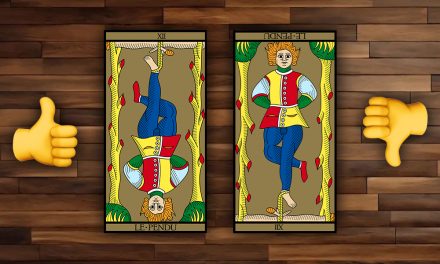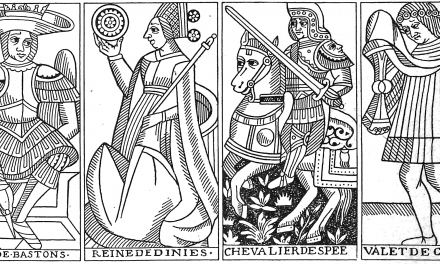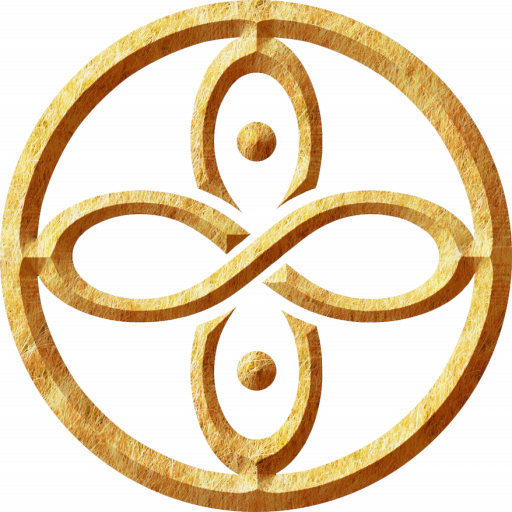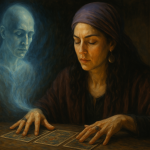Let’s explore some definitions that the character of Le Bateleur from the Tarot de Marseille, also known as The Magician in English-speaking decks, can offer us.
1. Psychological / State of Mind
Le Bateleur embodies a sharp, curious, and agile mind, always ready to explore new paths. Psychologically, he represents raw potential, the impulse of beginnings, and an instinctive intelligence that is not hindered by fear of the unknown. He reflects a fresh consciousness, sometimes naive, but endowed with great mental flexibility. Driven by the desire to experiment and to understand through action, he often adopts a playful or improvisational approach. He may also represent someone in search of meaning, still trying to establish the foundations of their identity.
2. Emotional / Feelings
On an emotional level, Le Bateleur resonates with enthusiasm and spontaneity. He experiences life as a game of opportunities to seize, which makes him light-hearted, joyful, and sometimes impulsive. His emotions are not deeply rooted yet: they emerge and fade quickly, depending on the stimuli of the moment. He can be charming and enthusiastic but also emotionally unstable or elusive. This tension between the desire for discovery and the fear of emotional commitment can create a subtle inner conflict, often masked by overflowing optimism.
3. Physical Attitude and Actions
Physically, Le Bateleur is in motion, agile, and expressive. He uses his hands, his body, his tools—everything becomes an excuse to manipulate, create, and demonstrate. He acts quickly, sometimes before even thinking, favoring immediate action over planning. His demeanor is dynamic, somewhat theatrical, like a magician captivating his audience. He loves to initiate, spark, and provoke reactions. In his actions, he can be inventive, clever, and resourceful, but also distracted or disorganized if he doesn’t channel his energy.
4. What He Recommends Doing
Le Bateleur advises daring to take the plunge, even if everything isn’t perfectly in place yet. He encourages trusting one’s intuition and vital momentum and utilizing what’s already at hand to initiate an action, project, or encounter. He teaches joyful boldness, active curiosity, and a spirit of discovery. He recommends being attentive to synchronicities, seizing opportunities with agility, and staying open to learning. He values the ability to improvise, to try, to confront real-life experiences without waiting for full mastery. It’s a call for spontaneous creativity, initiative, and confidence in one’s budding potential.
5. What He Recommends Not Doing
Le Bateleur discourages staying stuck, hesitating, or getting bogged down waiting for the perfect moment that will never come. He warns against immobility, paralyzing doubt, fear of making mistakes, or not being “ready.” He rejects overly cautious, timid, or conformist attitudes that prevent exploration, attempts, and experimentation. For him, the real danger isn’t making mistakes: it’s inaction. He encourages not cutting oneself off from creative impulses due to fear of others’ opinions or a need for control. What he dreads most is boredom, routine, and the stifling of enthusiasm. Thus, he pushes us to step out of the shadows, to expose ourselves, to say yes to the unexpected rather than staying in the comfort of bland familiarity.
6. Mythological Figures of Reference
Le Bateleur can evoke several mythological figures, but perhaps the one that corresponds most deeply to him is Hermes (or Mercury). Like Le Bateleur, Hermes is a young, lively, cunning, curious god, always on the move. He is the messenger of the gods, the god of travelers, merchants, thieves, and also of speech and transitions. Hermes handles tools, navigates boundaries, improvises, and initiates—just like Le Bateleur, who explores, manipulates, and transforms various objects laid out on his table.
Hermes also travels between worlds—from the heavens to the Underworld—and this ability to pass, mediate, invent, and adapt perfectly embodies Le Bateleur’s spirit: a figure of beginnings, movement, mental and physical agility. He represents the moment when everything is still possible, provided one dares to take the first step.
Ptah can also be a relevant mythological figure to associate with Le Bateleur, though on a slightly different, more symbolic and metaphysical level than the highly mobile Hermes.
Ptah, in Egyptian mythology, is the creator god through speech, through conscious word. He shapes the world with mind, heart, and word united. He is the divine craftsman, the master of artisans, architects, and form creators. Le Bateleur, who handles his tools, shaping the initial chaos with a first gesture, word, or intention, can be seen as a more earthly or embodied emanation of this creative force.
While Hermes embodies the agility of movement and cunning, Ptah embodies the power of structuring beginnings, the first act of manifestation. Le Bateleur can thus be viewed as the living incarnation of Ptah’s creative impulse, still in a phase of learning, play, and exploration. He doesn’t fully master everything as Ptah would, but carries the divine seed, the potential to shape the world through the tools (symbols, words, actions) he discovers.
Ptah represents a deeper, more inward, philosophical aspect of Le Bateleur, while Hermes reflects his younger, agile, and dynamic side. The two can complement each other in a multi-level interpretation.









